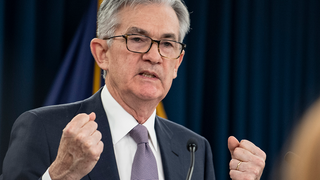The Reserve Bank is expected to follow other central banks in easing monetary policy, with Governor Lowe scheduled to give a video address Thursday afternoon. Reading between the lines of recent statements, the RBA is likely to couple a reduction in the official cash rate with a new approach to monetary policy that will effectively peg benchmark bond yields.
A further 25 basis point reduction in the official cash rate target to 0.25% will take the RBA’s main operating instrument to the effective lower bound. The RBA has previously ruled out taking the cash rate negative.
The reduction in the cash rate will likely be accompanied by explicit forward guidance about interest rates staying low for an extended period. The RBA has already signaled its view on that score, but Thursday may see the Governor be more explicit about the duration of this stance and the conditions under which the cash rate might be raised again.
The US experience suggests that calendar-based forward guidance should be avoided. Instead, such guidance should be data dependent. The obvious anchor point for such guidance is to rule out any policy driven tightening in monetary conditions until inflation is consistent with target and the unemployment rate is trending lower to its full employment rate.
At the same time, the RBA is likely to announce a version of what has been dubbed “yield curve control.”
Under this approach, the RBA would offer to buy government bonds at an implied target yield. The target will then effectively become the market yield, as no one is going to sell bonds at a price that is lower (a yield that is higher) than they can get from the RBA. The RBA will effectively peg yields in benchmark bond lines.
The focus for yield curve control is likely to be the front and middle part of the yield curve off which much retail and wholesale lending is priced.
The target yields will be designed to ensure transmission of the low official cash rate out along the yield curve.
Given the magnitude of the downturn confronting the Australian and world economy, a more open-ended approach to quantitative easing is called for, including both government and non-government debt securities, as well as equities.
This approach could also be applied to the long end of the curve to reinforce expectations that the cash rate will be held low for longer.
The Reserve Bank is already intervening in the secondary market for government bonds to maintain liquidity in stressed market conditions. Extending this intervention to peg bond yields is relatively straightforward.
This approach differs from the Federal Reserve’s approach to quantitative easing, which is to buy a given amount of US Treasuries and other debt securities, while allowing market interest rates to float.
Part of the RBA’s motivation in adopting yield curve control is to avoid having to expand its balance sheet with large scale outright purchases of government bonds. If the RBA’s commitment to its yield target is credible, then actual purchases can be minimised.
This approach has the advantage of avoiding putting the RBA in competition with other market participants for the stock of government bonds, including banks and other financial institutions required to hold high quality liquid assets for regulatory purposes. However, the supply of government bonds will quickly expand as the budget swings back into deficit.
The RBA would also like to avoid having to contract an enlarged balance sheet in the future.
The main concern with the RBA’s likely approach relative to the Fed’s is that we will no longer be getting price signals from the bond market about how effectively monetary policy is working.
In the US, bonds yields rose during QE episodes and fell during intervening periods. This was sometimes mistaken for monetary policy being ineffective, but it was actually a sign that QE was working to raise expectations for inflation and economic growth. By contrast, the RBA’s approach will reduce the information content of bond market prices.
As things stand, inflation expectations in the US and Australia are falling, indicating the Fed and the RBA are not doing enough.
The RBA’s approach may also limit the scope of asset purchases to Commonwealth government bonds, although Governor Lowe has also indicated that semi-government securities might feature in any bond buying program.
Given the magnitude of the downturn confronting the Australian and world economy, a more open-ended approach to quantitative easing is called for, including both government and non-government debt securities, as well as equities.
The RBA should commit to open-ended purchases of these assets until such time as inflation has returned to target and nominal spending and unemployment have stabilised, while allowing market interest rates to float.
As things stand, inflation expectations in the US and Australia are falling, indicating the Fed and the RBA are not doing enough.
As with the policy response to the pandemic more generally, it is better to overdo it than to die wondering.






